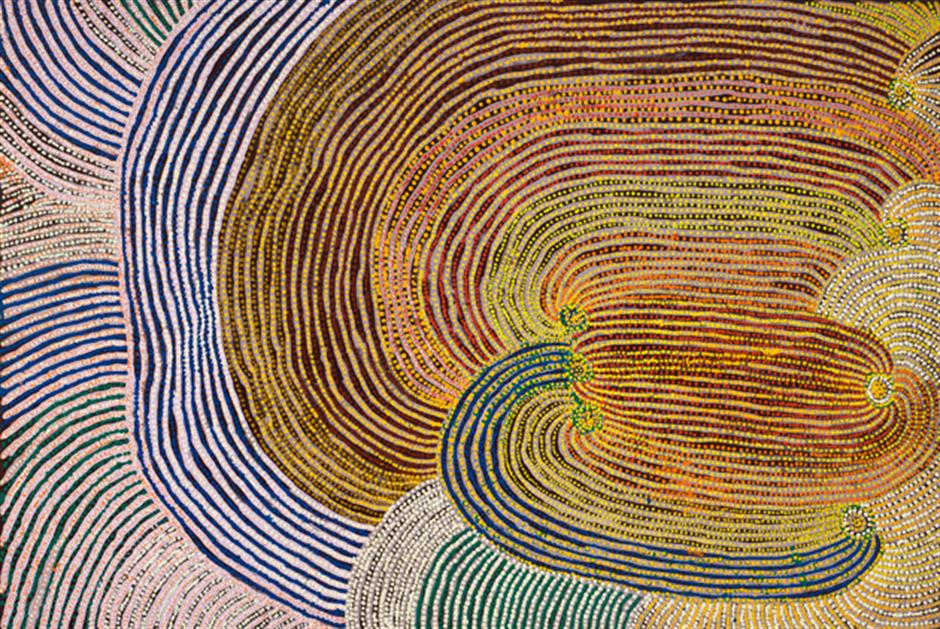An exuberant visual language has sprung out of Aboriginal artists across the continent of Australia. While this language occasionally looks extremely modern, it depicts unexpected subjects. One elder artist used paint with great bravado to take viewers underground to watch a yam grow. Another painted vivid stripes to enable viewers to stand by the edge of a shimmering salt lake. Epics that involve shape shifting ancestors and short stories devoted to the flora and fauna of their country are given visual form. A sudden abundance of art production since the 1970s has been described as a renaissance of the world’s oldest living culture.
In 2012, an exhibition that explores this unusual chapter of art history will be unveiled. It will feature over 100 artworks from the late 20th to early 21st century—paintings on canvas; ochres on bark; sculptures carved of wood, woven of fiber and cast in bronze. One observer cites Aboriginal culture as having the ability to induce a type of “intellectual vertigo,” or a sense of displacement from usual routines. Landscapes without horizon lines, paintings about Laws, portraits of ancestral beings, still lifes devoted to bush foods and poles that commemorate people’s lives are all evidence of Aboriginal creativity giving rise to a dynamic art movement.
–Pam McClusky, Curator of Art of Africa and Oceania
Source: Seattle Art Museum
